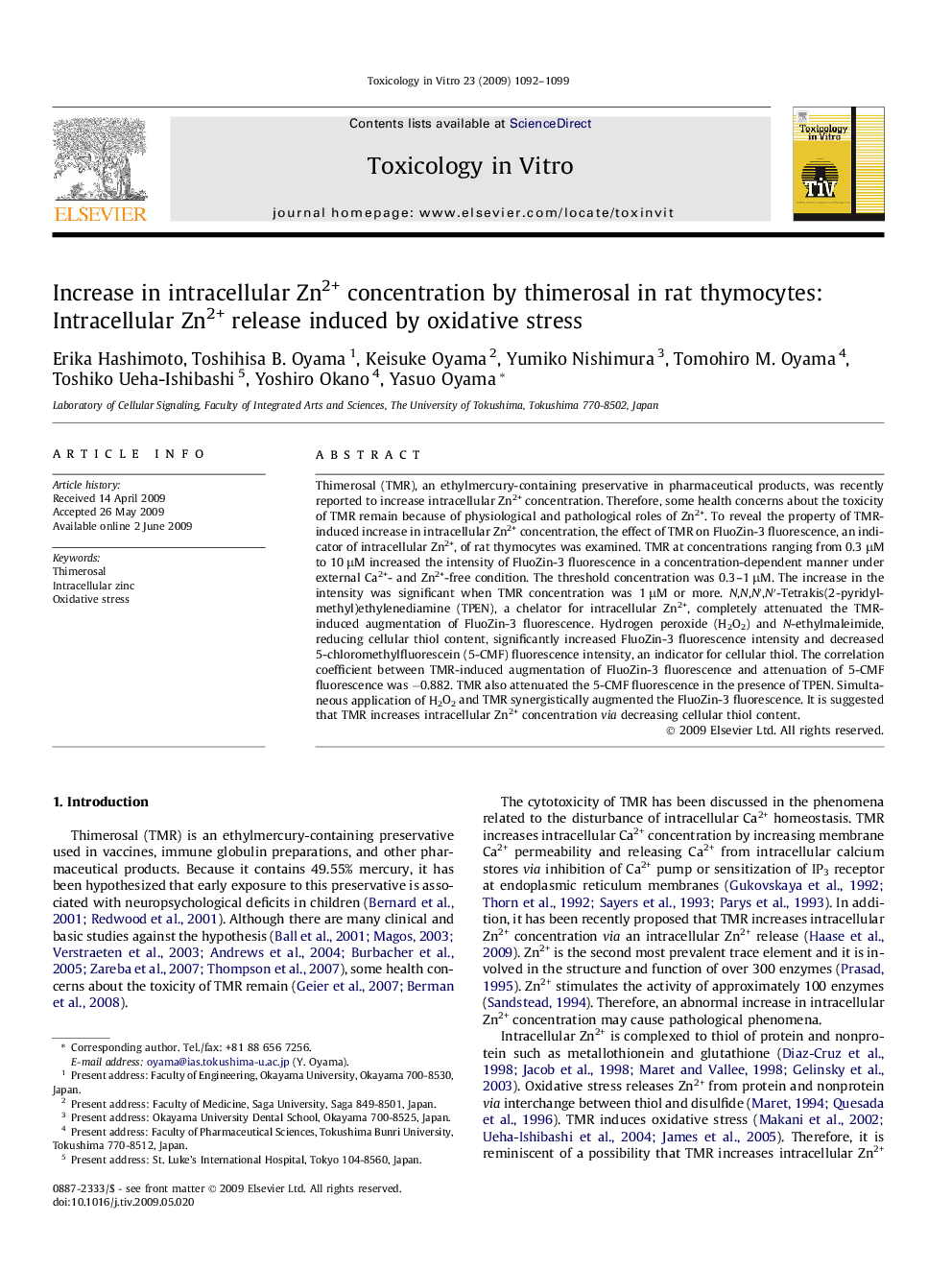| Article ID | Journal | Published Year | Pages | File Type |
|---|---|---|---|---|
| 2602993 | Toxicology in Vitro | 2009 | 8 Pages |
Thimerosal (TMR), an ethylmercury-containing preservative in pharmaceutical products, was recently reported to increase intracellular Zn2+ concentration. Therefore, some health concerns about the toxicity of TMR remain because of physiological and pathological roles of Zn2+. To reveal the property of TMR-induced increase in intracellular Zn2+ concentration, the effect of TMR on FluoZin-3 fluorescence, an indicator of intracellular Zn2+, of rat thymocytes was examined. TMR at concentrations ranging from 0.3 μM to 10 μM increased the intensity of FluoZin-3 fluorescence in a concentration-dependent manner under external Ca2+- and Zn2+-free condition. The threshold concentration was 0.3–1 μM. The increase in the intensity was significant when TMR concentration was 1 μM or more. N,N,N′,N′-Tetrakis(2-pyridylmethyl)ethylenediamine (TPEN), a chelator for intracellular Zn2+, completely attenuated the TMR-induced augmentation of FluoZin-3 fluorescence. Hydrogen peroxide (H2O2) and N-ethylmaleimide, reducing cellular thiol content, significantly increased FluoZin-3 fluorescence intensity and decreased 5-chloromethylfluorescein (5-CMF) fluorescence intensity, an indicator for cellular thiol. The correlation coefficient between TMR-induced augmentation of FluoZin-3 fluorescence and attenuation of 5-CMF fluorescence was −0.882. TMR also attenuated the 5-CMF fluorescence in the presence of TPEN. Simultaneous application of H2O2 and TMR synergistically augmented the FluoZin-3 fluorescence. It is suggested that TMR increases intracellular Zn2+ concentration via decreasing cellular thiol content.
